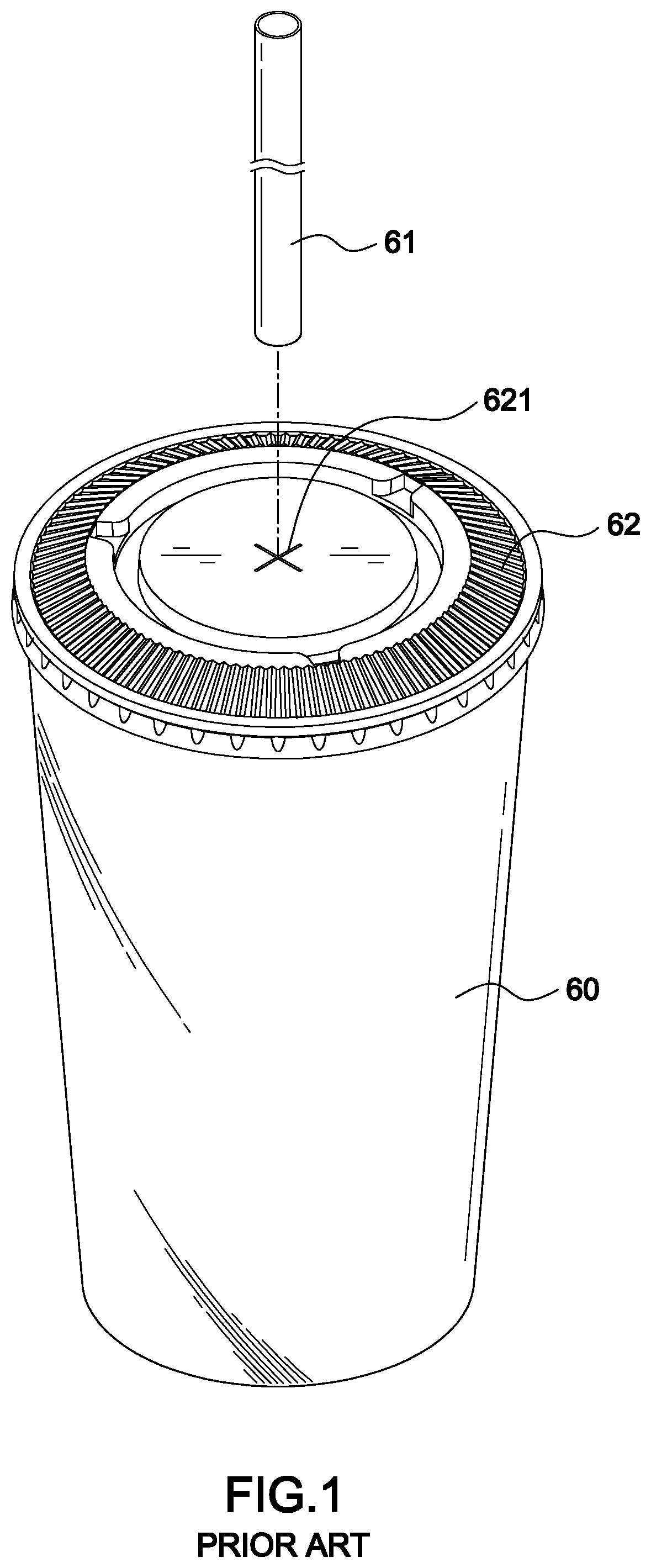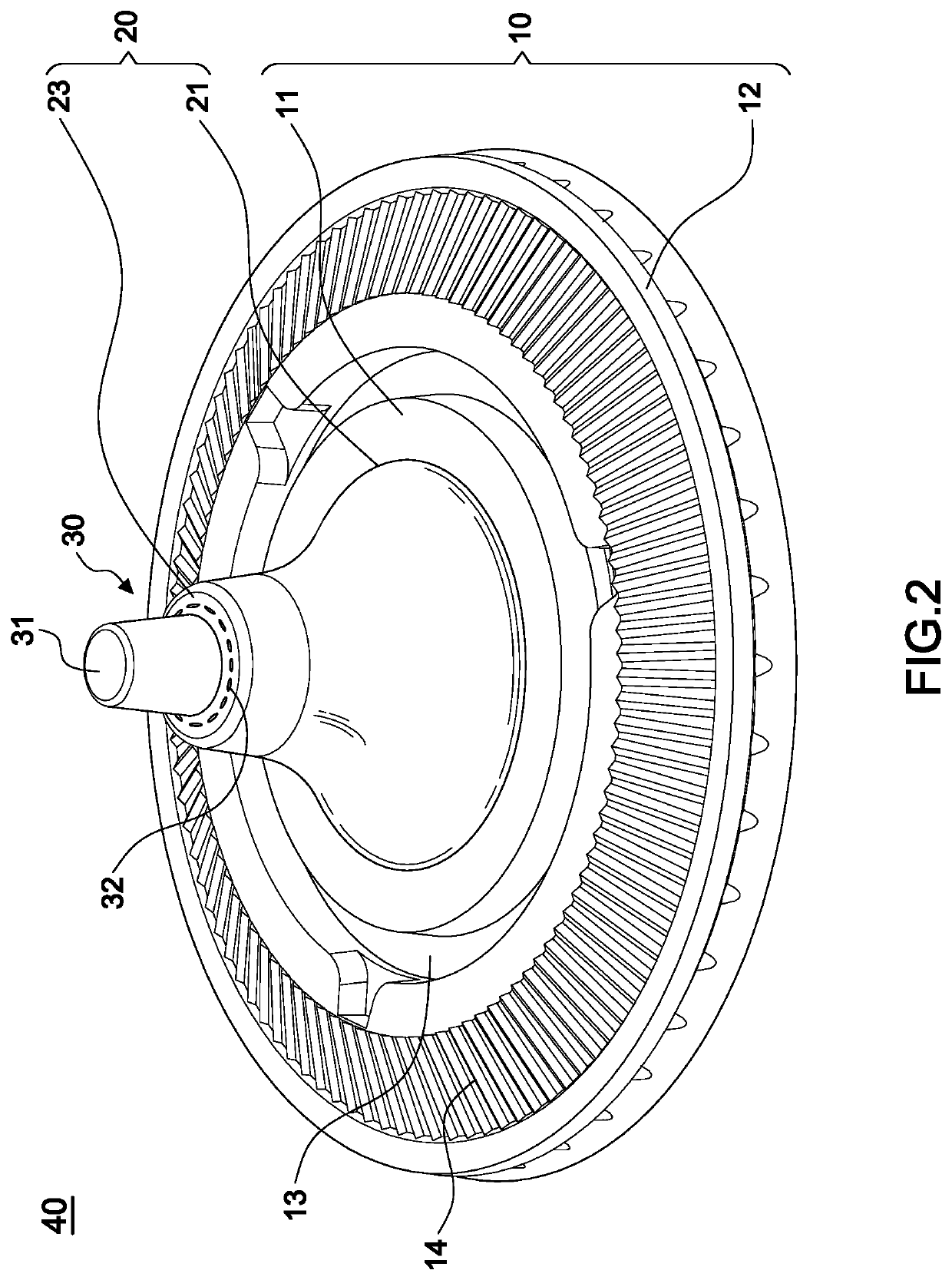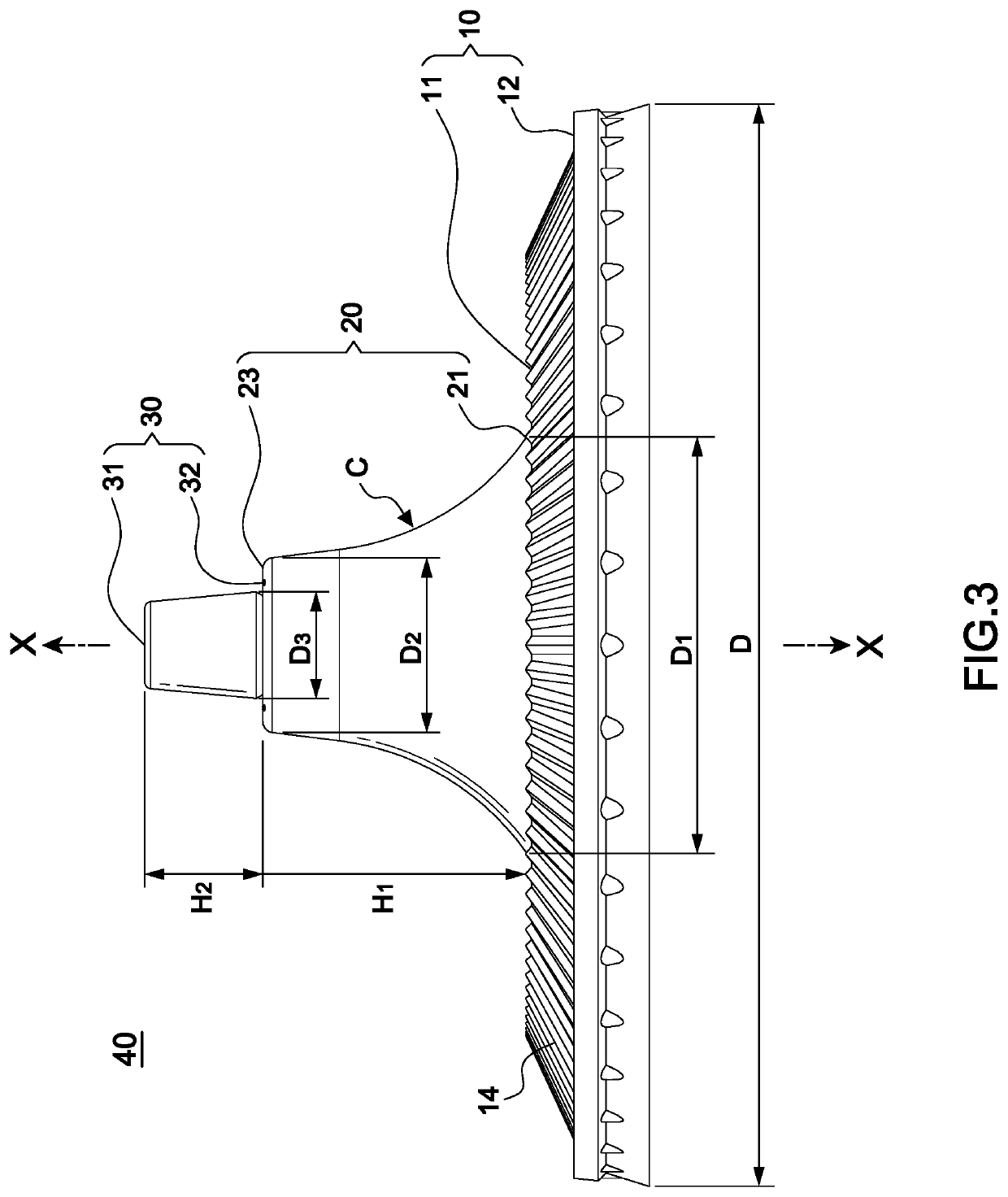One-piece drink-through cup lid with a straw section
- Summary
- Abstract
- Description
- Claims
- Application Information
AI Technical Summary
Benefits of technology
Problems solved by technology
Method used
Image
Examples
Embodiment Construction
[0026]To further illustrate the features and structures of the drink-through cup lid, please referring to an embodiment in the following with reference to FIGS. 2-6B. A one-piece drink-through cup lid with a straw section 40 is designed for covering on a beverage cup 50. In the preferred embodiment, the one-piece drink-through cup lid with a straw section 40 mainly includes a cup lid 10, a conic section 20 and a detachable tube section 30 arranged on the conic section.
[0027]The cup lid 10 has a peripheral surface 11, a peripheral edge 12 extending from an outer edge of the peripheral surface 11, a circular depression 13 and a wavelike surface 14. Such structure can be commonly seen in conventional cup lids; however, the features of the present invention is that the conic section 20 is formed and protruding axially at a center of the peripheral surface 11 and has a bottom periphery 21 connecting to the peripheral surface 11 so as to form a first through hole 22 inside the conic secti...
PUM
 Login to View More
Login to View More Abstract
Description
Claims
Application Information
 Login to View More
Login to View More - R&D
- Intellectual Property
- Life Sciences
- Materials
- Tech Scout
- Unparalleled Data Quality
- Higher Quality Content
- 60% Fewer Hallucinations
Browse by: Latest US Patents, China's latest patents, Technical Efficacy Thesaurus, Application Domain, Technology Topic, Popular Technical Reports.
© 2025 PatSnap. All rights reserved.Legal|Privacy policy|Modern Slavery Act Transparency Statement|Sitemap|About US| Contact US: help@patsnap.com



